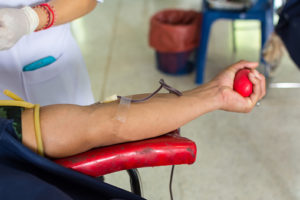Although the number of RBC and whole blood cell transfusions has decreased by approximately 10% over the last decade, there has been a greater decline in the units of blood collected, thereby putting the blood supply at risk. In order to calculate the current eligible donors in the U.S., an epidemiologic model was developed accounting for comorbidities and revised donor exclusion factors primarily relating to transfusion-transmissible diseases and male-to-male sexual contact. During the last 11 years, the U.S. population has increased from 293 to 327 million people, adding 34 million more potential blood donors. Once donor exclusion factors were taken into account, however, the blood donor pool increased from 111 million (38% of the U.S. population) in 2007 to 205 million (63% of the U.S. population) in 2018. The greatest impact in the donor pool was found to be inclusion of individuals aged 65 years and older, which accounts for 51 million more potential donors. In 2017, 12 million units of blood were donated by 9 million donors—4.8% of eligible donors. The majority of individuals who are eligible to donate blood do not, and increased resources for donor recruitment are needed to ensure a stable supply of blood.
Reference:

